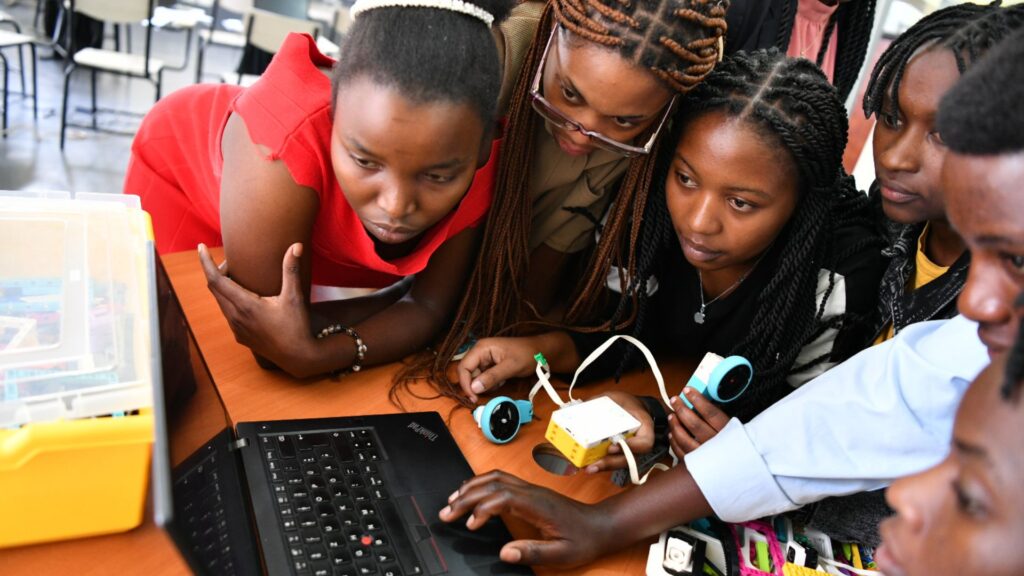|
Getting your Trinity Audio player ready...
|
Youth Popular Games have now become much more than mere entertainment; they are a dynamic cultural force that shapes the lives of young players globally. My experience researching and analyzing trends in gaming, youth culture, and digital media has provided a front-row seat to these shifts, revealing how profoundly Youth Popular Games influence not just recreation but also learning, socialization, and identity. This article offers an in-depth examination of how these games function, what makes them so compelling to young audiences, and why understanding them matters for parents, educators, and anyone invested in youth development.

Youth Popular Games: A Cultural Phenomenon Shaping the Next Generation
To begin with, youth popular games have transformed the way young people engage with entertainment, interact with peers, and even develop critical life skills. This phenomenon is powered by ever-evolving game genres. It is also powered by cutting-edge technology and a digital ecosystem that enables virtual socialization on an unprecedented scale. As someone who has closely observed this cultural evolution, I understand how Popular Games Among Young People serve as a mirror reflecting the shifting interests, concerns, and aspirations of young players.
How Trends Are Shaping Youth Culture Today
The realm of Popular Games Among Young People is continuously evolving, influenced by technological advancements and the creative endeavors of game developers who understand what resonates with younger players. Through my work, I’ve seen how trends like battle royale modes and immersive role-playing scenarios captivate young audiences. But the question is: why?
The answer lies in the blend of accessibility, social connectivity, and innovation that these games provide. Game developers are meeting young players’ expectations for high-quality graphics, realistic physics, and complex storylines. Additionally, these are increasingly important to youth audiences. These features have turned certain games into cultural staples. It shapes how young people spend their time and, ultimately, how they view the world.
Summary
Trends in youth culture are shaped by popular games, which are constantly evolving due to technology and creative game developers. These games attract young players with accessible, social, and innovative features. Developers focus on high-quality graphics, realistic physics, and complex storylines to meet the expectations of youth. As a result, certain games have become cultural staples, influencing how young people spend their time and perceive the world.
Examining the Genres That Define Youth Popular Games
Youth Popular Games encompass a diverse array of genres, each resonating with specific aspects of youth interests and psychological needs. My analysis of this area reveals that games like role-playing games (RPGs) engage players with rich, narrative-driven worlds, while first-person shooters (FPS) cater to players seeking fast-paced action and competition. In my experience, understanding the popularity of different genres is key to grasping what drives youth engagement.
Interestingly, genres are not static—they evolve in response to both player demand and technological breakthroughs. New sub-genres, like hybrid virtual reality games or cooperative survival games, continually emerge, catering to the varied interests of young gamers. By examining these genres, we gain a clearer picture of the intricate dynamics that fuel the appeal of Youth Popular Games, as well as the cognitive and social benefits these games can offer.
How Youth Popular Games Drive Social Interaction and Community Building
Popular Games Among Young People aren’t just for solo enjoyment—they are interactive platforms that connect young players in real time, creating digital communities that often extend beyond the game itself. In my studies, I’ve seen how these games foster teamwork, camaraderie, and social skills. Players form friendships, join guilds, and participate in multiplayer modes where collaboration is essential for success. This level of social engagement distinguishes Youth Popular Games from traditional forms of entertainment, adding value to the gaming experience.
Moreover, the rise of esports has transformed Youth Popular Games into a competitive, spectator-driven phenomenon. Through esports, players not only bond with teammates but also with audiences, creating a sense of belonging and shared excitement. Esports tournaments, streaming platforms, and online forums allow young players to cultivate friendships, build social capital, and participate in a wider gaming community. This reinforces how games can enhance the social landscape of youth culture.
Educational Potential in Youth Popular Games: Debunking Myths
Contrary to common misconceptions, Youth Popular Games can be a constructive influence, offering real educational benefits. Through my professional observations, I’ve seen how games develop cognitive skills, foster critical thinking, and enhance creativity in young players. Games that require strategy, like real-time strategy (RTS) games, stimulate players’ decision-making abilities and improve their planning skills. While puzzle-based games boost problem-solving and memory.
Additionally, many games today incorporate educational elements, whether through history-based simulations or STEM-themed challenges that encourage curiosity and learning. This educational dimension provides a meaningful counterpoint to outdated stereotypes about gaming. It highlights that Youth Popular Games can be a positive tool in a young person’s intellectual development.
Navigating the Challenges of Popular Games Among Young People
While Youth Popular Games offer many benefits, they also present challenges. My experience in media analysis and youth behavior highlights the importance of addressing issues like screen time management, online safety, and potential impacts on mental well-being. Excessive gaming can lead to behavioral problems or impact academic performance. This makes it essential for parents and young players to approach gaming with balance and awareness.
Equipping parents and guardians with knowledge about these challenges is crucial. By promoting responsible gaming practices—such as setting screen time limits and educating young players on online safety—families can foster a healthy, balanced approach to gaming. Initiatives by various organizations also help promote responsible gaming, providing parents and gamers with tools to ensure that Youth Popular Games remain a positive influence.
The Broader Cultural Impact of Popular Games Among Young People
Popular Games Among Young People have expanded their influence well beyond the gaming world, permeating music, fashion, and even language. My insights into digital trends show that these games drive fashion collaborations, produce music tie-ins, and inspire meme culture. This creates a bridge between virtual and real-world culture. This cultural impact underscores the importance of understanding Youth Popular Games not only as entertainment but as a significant force in shaping the perspectives and values of today’s youth.
In-game events, virtual concerts, and collaborations with popular brands further solidify the cultural presence of Youth Popular Games. It highlights how they serve as a medium for creativity and self-expression. This cultural influence fosters an environment where gaming and real-world experiences intersect, allowing youth to engage with pop culture in interactive, meaningful ways.
Conclusion
In conclusion, Youth Popular Games are a multi-dimensional phenomenon that impacts young people’s lives in more ways than one. Through my expertise in gaming trends and youth culture, it’s clear that these games not only entertain. They also educate, connect, and influence. Whether through innovative gameplay, social interaction, or cultural impact, Popular Games Among Young People continue to evolve, reflecting and shaping the interests of young players worldwide. This comprehensive exploration of Youth Popular Games provides valuable insights for parents, educators, and youth alike. Moreover, it offers a deeper understanding of the powerful role gaming plays in today’s society.
FAQs
1. What are popular video games among young people?
Popular video games among young people are games that are widely enjoyed by younger audiences. Additionally, these games are engaging and often include social interaction, competition, and immersive experiences.
2. Why are these games so appealing to younger players?
These games offer fun and interactive gameplay with features like teamwork, problem-solving, and creativity. High-quality graphics and also engaging designs make them entertaining and captivating.
3. How do these games impact social connections?
These games allow players to connect with friends and others globally. Multiplayer modes and also online communities help players form friendships, join teams, and communicate, improving their social skills.
4. Can these games be educational?
Yes, many of these games teach valuable skills. Strategy games, for example, help with critical thinking and decision-making. Also, others incorporate educational elements like history or science in a fun, interactive ways.
5. What are the main types of games that young players enjoy?
There are various genres, such as action games, role-playing games (RPGs), sports games, and puzzle games. Each genre offers different experiences and challenges that cater to the interests of younger players.
6. Are there any downsides to playing these games?
Excessive play can cause issues like poor academic performance, lack of physical activity, or difficulty managing screen time. It’s important to balance gaming with other activities, and parents should guide their children in this.
7. How do these games shape youth culture?
These games influence trends in music, fashion, and language. They often inspire memes and collaborations with brands, bridging the gap between virtual experiences and real-world culture.
8. How do esports relate to these games?
Esports have turned these games into competitive sports. Tournaments and live streams create communities, allowing players to compete and interact with fans, enriching the overall gaming experience.
9. Can these games improve cognitive skills?
Yes, many of these games challenge players to think strategically, improve memory, and solve problems, enhancing mental skills that help in other areas of life.
10. How can parents manage the challenges of these games?
Parents can manage by setting limits on screen time, monitoring online interactions, and also encouraging a healthy balance between gaming and other activities. There are also resources to promote responsible gaming behavior.
You might also be interested in the following:
Youth Identity Exploration on Social Media
Challenges Facing Youths Today: Top Concerns
Youth Mental Health: A Guide to Resilience.
The Role of Technology in Youth Development




